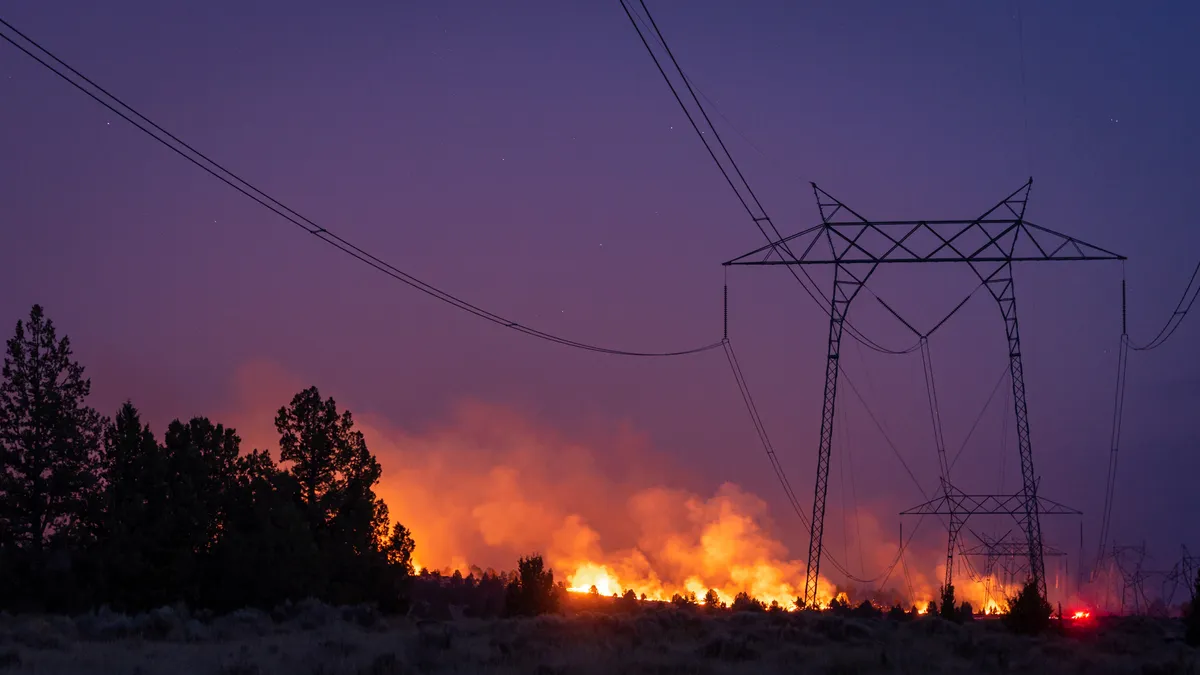Dive Brief:
- The California Public Utilities Commission on Thursday approved a proposal from Pacific Gas & Electric for a hybrid battery energy storage and hydrogen fuel cell system that will provide power to a Northern California substation that is prone to wildfire-related electricity shutoffs.
- The 8.5 MW microgrid, which will be developed by Energy Vault, is expected to generate up to 293 MWh during a 48-hour period, although actual generation may vary depending on the length of the power outage and other factors, PG&E said in its proposal to the commission.
- “[T]his is a cool use case. I’m hoping this is potentially replicable,” Jin Noh, interim executive director of the California Energy Storage Alliance, said. However, “I know every microgrid project is custom to that location and the need. So I think that is going to be the challenge of the day — how do we scale these microgrid solutions despite the fact that everything is custom in nature when it comes to the needs of any particular application?”
Dive Insight:
California utilities have been deploying proactive power outages — called public safety power shutoffs — during weather conditions that increase the risk that their infrastructure might cause wildfires. From 2013 through 2019, the state’s three large investor-owned utilities companies deployed 33 such outages, according to the CPUC.
This microgrid’s use of green hydrogen fuel cells and batteries marks a departure from PG&E’s earlier practice of using diesel generators for backup power during outages. California regulators directed PG&E to begin transitioning to cleaner sources of backup power in 2021, by procuring a minimum of one clean substation microgrid project that could be used during wildfire-related outages.
The microgrid, proposed to regulators last December, is expected to begin operating in 2024 for a planned period of 10.5 years. Unlike the traditionally-used diesel generators, this project will lead to no emissions of criteria air pollutants, PG&E noted in its December letter to the commission. If successfully developed, the microgrid “would represent a major advance in microgrid development and a very significant step toward cleaner forms of microgrid generation,” the utility added.
The microgrid project represents a good starting point in terms of understanding the technical capabilities of this type of fuel cell-plus-storage configuration, according to Noh.
“I assume having this type of structure familiar and contracted and tested will allow these types of resources to target different needs as well,” he added.
“Energy Vault is pleased with the CPUC’s approval of our innovative microgrid project with PG&E in Calistoga. We are committed to supporting local communities to have access to resilient and clean power,” Marco Terruzzin, the company’s chief commercial and product officer, said in an email.
“This breakthrough collaboration between PG&E and Energy Vault provides a template for renewable community-scale microgrids as we work to build a portfolio of non-fossil solutions for the longer term,” PG&E spokesperson Paul Doherty said in an email.















